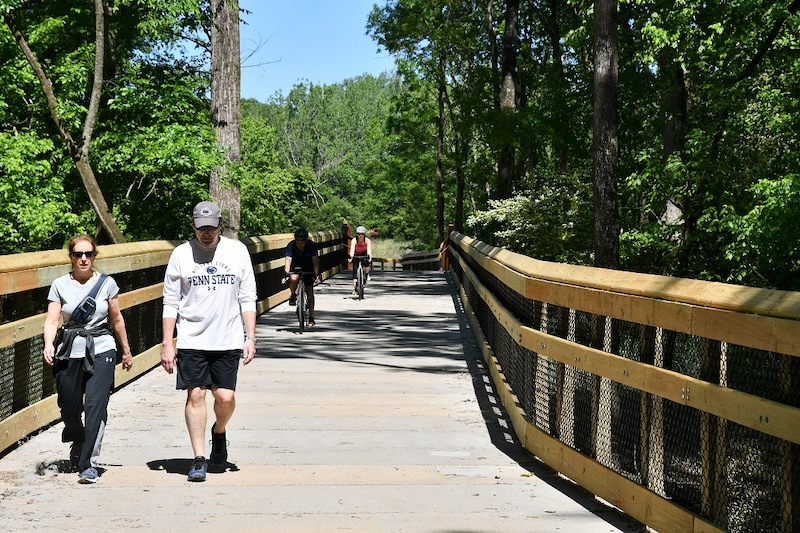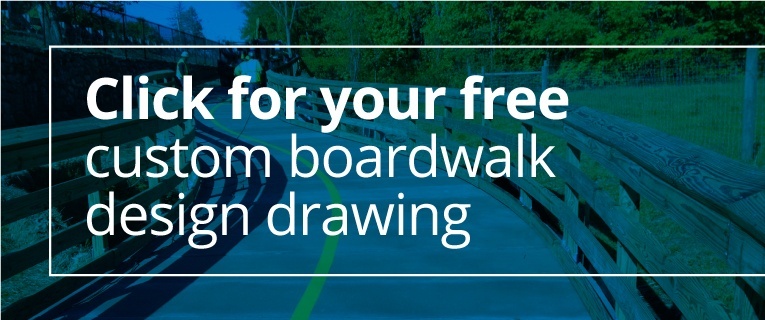Even at the beginning stages of planning a project that involves a commercial boardwalk or pedestrian bridge, construction cost and bid numbers will be a factor in determining the specified system.
“What does it take to install this boardwalk system?” is a question we review with professional designers and project owners on a daily basis. And one of the responsibilities of the project designers is to craft a set of bid documents that contractors can use to prepare accurate construction costs in their project bid. So it’s no surprise that one of the first steps in a designer’s scope of work is to get a sense for boardwalk construction cost and ease of installation.
Misalignment and the Cost of a “Bad Bid”
Misalignment or lack of clarity on bid documents will result in a general contractor submitting big numbers that are meant to “CYA.” If you are a landscape architect, engineer or project owner, we don’t need to spell out CYA to make the point. You’ve likely already seen this dozens of times. Bid numbers can come in over the project budget for any number of reasons, but they are certainly inflated when the contractors aren’t 100% confident in what they’ll need to complete the installation.
Too often, when bids are submitted, the figures are misaligned with the actual cost of construction; we’ll dig into some of the reasons for this below. Misaligned costs result in one or more of the following negative outcomes:
- Bids will be more conservative, without a realistic expectation of cost and time.
- Construction costs come in well over project budget.
- Higher bids can create a perception of a certain product, or even the entire project, being very expensive.
- Additional costs are realized late in the construction process, when change orders need to be placed. This results in a higher overall cost to the project owner.
Sometimes this difference in accurate construction costs vs. what is submitted by general contractors for a project bid is a result of intentional misquoting to secure the project. But beyond that, project quotes are inaccurate because general contractors were building their bids off of an incorrect or unclear set of engineering and design requirements for the structure.
In short, bid results will only be as precise as the bid documents submitted.
Avoid Ambiguity on Bid Documents
Landscape architects and engineers can do their part in ensuring that the projected figures are realized by compiling a clear and comprehensive set of information about the specified boardwalk or pedestrian bridge product.
Let’s take a closer look at how small discrepancies on plans can cause bigger, more expensive problems down the road. More importantly, we’ll share our takeaways from our 100+ years of combined experience in this industry to help you avoid common pitfalls around crafting a set of bid documents. Our hope is that you will leverage this information in your next set of bid documents so what you envision for a space is actualized.
As a real life example, we’ve seen a set of bid documents that specified a ten-foot-wide concrete cross-section, but the design load requirements dictated that the section should be twelve feet wide. In this case, then the general contractor has a choice to make. Either quote a twelve-foot-wide clearance, which risks putting the project out of budget compared to competing contractors, or quote a ten-foot-wide clearance that will most likely generate a change order.
Clarifying Questions on Bid Documents
If you receive a question on your bid documents, be sure to answer them accurately with as much detail as possible before distributing the answer to all bidders. If you don’t, you may find bidding contractors having to create solutions and answers based on your mistakes.
Double Checking Goes a Long Way
Just like I would tell my sons with their high school homework, “double check your work.” The stakes are higher here, and simply put, it’s important to double-check everything before sending out your bid documents.
It’s common for many designers to copy and paste verbiage from previous similar projects into new bid documents. While this may be more efficient on the surface, the reality is that without a thorough review, this can easily lead to mistakes and inconsistencies in your bid documents.
Engineering Input on the Boardwalk Structure
Engineers, likewise, should thoroughly analyze the job site. Ideally engineers are providing details and accurate estimates that demonstrate an understanding of the project. A shortlist of items to include in the bid documents:
- Evaluation of the foundation systems for the hydraulic, structural, and environmental loading requirements.
- Investigation results of the geotechnical conditions that should be considered in the foundation design.
- Evaluation of pier locations along the overall structure - the spacing, or if utilities may get in the way by running around or under the boardwalk.
- An understanding of what’s happening at the tie-on to the approaching trail, and if there needs to be a retaining wall, wing wall, or handrails.
- If construction is to take place in a protected wetland or other sensitive environmental site, the bid documents should include direction on whether the boardwalk needs to be constructed “top down” versus using temporary construction mats.
If you’re creating bid documents for a boardwalk design that may not be a perfect duplication, call PermaTrak today, and we will work with you to provide sufficient details for free.





